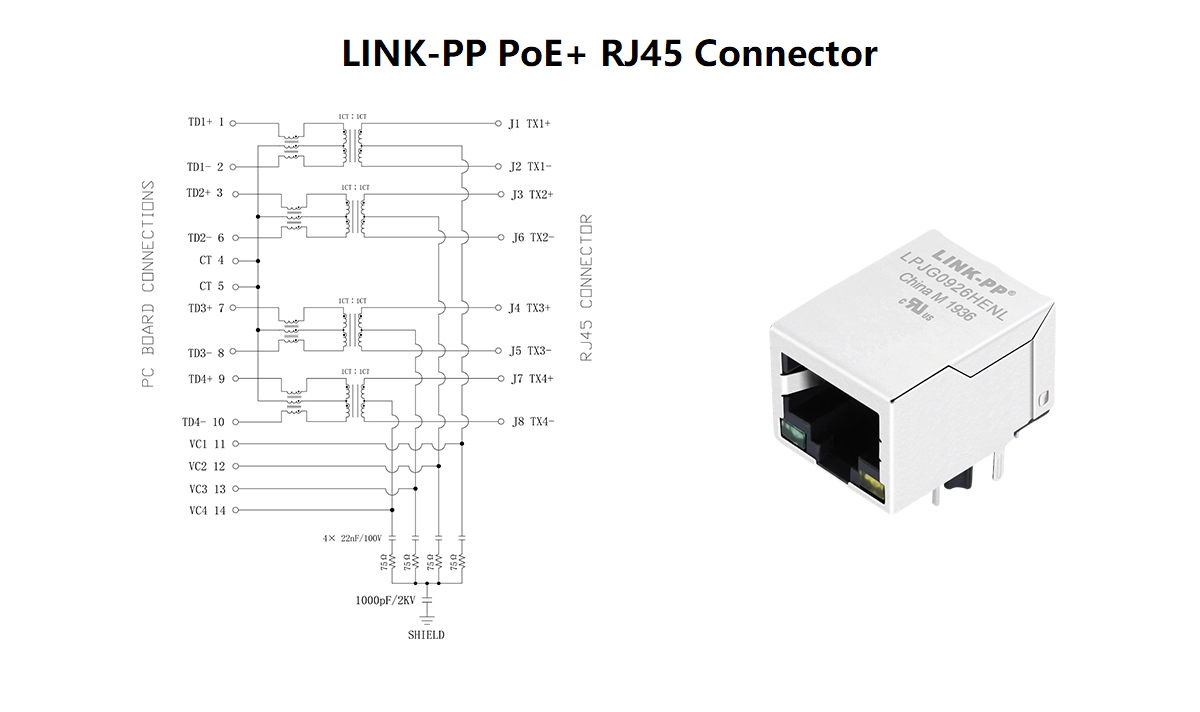
As Power over Ethernet (PoE) continues to evolve, intelligent power negotiation has become critical for managing power budgets and optimizing network efficiency. The Link Layer Discovery Protocol (LLDP), standardized under IEEE 802.1AB, plays a key role in enabling communication between PSE (Power Sourcing Equipment) and PD (Powered Devices). By extending basic PoE capabilities, LLDP ensures safe, flexible, and efficient power delivery across modern Ethernet infrastructures.
✅ What Is LLDP and Why It Matters in PoE
LLDP is a Layer 2 network protocol designed to let Ethernet devices announce their identity, capabilities, and configuration to directly connected peers.
In PoE networks, LLDP provides the communication channel that allows a PSE (such as a PoE switch) to understand a PD’s exact power requirements, beyond the fixed hardware classification stage.
Without LLDP, PoE systems rely solely on predefined power classes—often leading to over- or under-provisioning. With LLDP, power can be dynamically allocated based on real-time device needs.
✅ How LLDP Enables Intelligent Power Negotiation
PoE Power Negotiation Process
Detection:
The PSE first detects a valid PD by applying a low probing voltage and checking for the device’s PoE signature.Classification:
Using IEEE 802.3af/at/bt standards, the PSE classifies the PD into a power class (e.g., Class 0–8).LLDP Exchange:
After network link establishment, the PSE and PD use LLDP frames—specifically the Power via MDI (Medium Dependent Interface) TLV—to negotiate the exact wattage needed.
This LLDP-based negotiation allows PDs to request customized power levels (for example, 7.5W instead of the full 15.4W), helping the PSE optimize its total power budget.
LLDP TLVs Used for Power Management
In the PoE context, LLDP communicates power parameters through TLVs (Type-Length-Value fields), such as:
Power Requested / Allocated (Watts)
Power Source (PSE, PD, or both)
Power Priority
PD Classification Type
Power Pairing and Mode (A/B)
These TLVs allow the PSE and PD to “negotiate” energy usage intelligently, enabling real-time adjustments when devices change operating states (e.g., sleep mode or active video streaming).
✅ Advantages of Using LLDP in PoE Networks
★ 1. Dynamic Power Allocation
LLDP enables software-based power negotiation, allowing PDs to request only what they need. This maximizes energy efficiency and prevents unnecessary over-allocation.
★ 2. Enhanced Power Budget Control
For large-scale deployments—like smart buildings or enterprise IP surveillance—LLDP helps the network administrator monitor and manage aggregate power consumption across all PoE ports.
★ 3. Improved Device Interoperability
LLDP is vendor-neutral, unlike proprietary discovery protocols. It ensures interoperability between PoE devices from different manufacturers, making it ideal for multi-vendor networks.
★ 4. Safety and Reliability
By enabling communication between PSE and PD, LLDP prevents mismatched power delivery and potential device damage, ensuring stable PoE operation even in mixed environments.
✅ LLDP and IEEE PoE Standards
PoE Standard | Type | Max Power (PSE) | LLDP Role |
|---|---|---|---|
IEEE 802.3af | PoE (Type 1) | 15.4W | Optional |
IEEE 802.3at | PoE+ (Type 2) | 30W | Introduced LLDP negotiation |
IEEE 802.3bt | PoE++ (Type 3 & 4) | 60–90W | Mandatory LLDP-based power management |
Under IEEE 802.3bt, LLDP is not just optional—it’s essential.
Type 3 and Type 4 devices depend on LLDP to negotiate exact power levels up to 90 or 100 watts per port.
✅ LLDP-MED: Extending LLDP for Voice and IoT
LLDP-MED (Media Endpoint Discovery), an extension defined by ANSI/TIA-1057, further enhances PoE management for devices such as IP phones and smart IoT terminals.
It supports features like:
Automatic voice VLAN assignment
Power policy settings for endpoints
Location information for emergency services
LLDP-MED ensures that powered devices like VoIP phones receive correct power, priority, and QoS automatically—simplifying deployment in enterprise networks.
✅ LINK-PP PoE Solutions with LLDP Compatibility
As a trusted PoE component manufacturer, LINK-PP provides a wide range of PoE RJ45 connectors and LAN transformers designed for PSE and PD equipment supporting LLDP negotiation.
By integrating these components, network manufacturers can ensure reliable PoE delivery, accurate LLDP communication, and improved interoperability across modern Ethernet systems.

✅ Conclusion
The Link Layer Discovery Protocol (LLDP) is far more than a topology discovery tool—it’s a core enabler of intelligent PoE operation.
Through its standardized “Power via MDI” TLVs, LLDP allows PSE and PD devices to communicate power needs dynamically, improving energy efficiency, safety, and manageability across complex networks.
In today’s power-sensitive IoT and enterprise environments, adopting LLDP-enabled PoE technology—backed by high-performance components like LINK-PP’s PoE RJ45 connectors—is essential for building scalable, future-proof Ethernet infrastructure.


